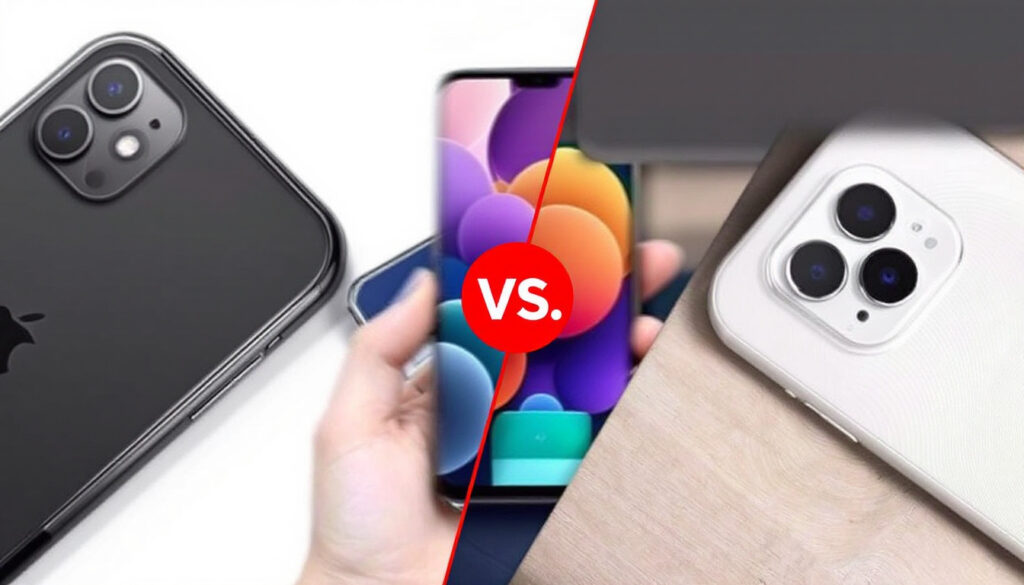iPhone 2025 vs. Top Android Flagships: Side-by-Side Feature Analysis for Professionals
Choosing between the iPhone 2025 and top Android flagships is more complex than ever. Each new release introduces features that reshape workflows, compatibility, and security. For IT professionals, developers, electronics enthusiasts, and business leaders, choosing a device goes beyond personal preference. In today’s fast-paced mobile market, it’s a strategic investment.”iPhone 2025 vs. Top Android Flagships”. This analysis provides a direct comparison of what the latest iPhone and leading Android smartphones offer. Key focus areas include hardware performance, software capabilities, productivity tools, and ecosystem integration. Understanding these distinctions helps business and tech decision-makers select the most effective device for their needs. If you also manage data across platforms in your environment, you may find our review on the latest cloud storage options, such as Google Drive and OneDrive, a useful resource HERE. This side-by-side review equips you with clear insights, so you can make an informed, confident choice in a fast-evolving mobile market “iPhone 2025 vs. Top Android Flagships”. Design, Build Quality, and Display Technology The physical aspects of today’s flagship smartphones hold more significance than ever for professionals. Durable build, ergonomic form, and advanced displays drive long-term value and daily usability in high-pressure environments. Comparing the iPhone 2025 and top Android models reveals where design decisions align—and diverge—across platforms. Materials and Build Quality Apple has maintained its focus on premium materials in the 2025 iPhone lineup, continuing with aerospace-grade aluminum and ceramic shield glass. Reports suggest new models such as the rumored iPhone 17 Air are both lighter and thinner, yet retain robust scratch resistance and IP68 water and dust certification. This measured evolution keeps the iPhone attractive for executives and field professionals who expect reliable durability without extra weight. Android flagships from Samsung, Google, and Xiaomi have also raised their standards. Leading models like the Samsung Galaxy S25 Ultra and Google Pixel 10 Pro use a mix of Gorilla Glass Victus 3, strengthened aluminum, and polished ceramic. Many Android devices now offer equal or greater resistance to daily impacts and moisture, bridging the gap between aesthetics and endurance. Form Factor and Ergonomics Ergonomics impact productivity during prolonged use. The iPhone 2025 introduces even narrower bezels and a contour that rests comfortably in most hands, providing a secure feel with one-handed operation. Slimness without sacrificing grip is a recurring trend, as seen in rumored details from recent Apple iPhone design reports. Android manufacturers compete by diversifying form factors: Both Apple and Android makers address one-handed use, but Android offers more variety in screen sizes and styles, catering to different preferences. Durability for Professional Use Business settings demand low failure rates. Apple’s ceramic shield and Android’s Gorilla Glass Victus deliver resilient performance during drops and bumps. IP rating parity means both ecosystems offer strong protection against water, dust, and accidental spills—a must for professionals in mobile, outdoor, or industrial roles. For a deeper look at how shifts in consumer expectations shape product durability and appeal, see our analysis on how consumer trends influence digital product design. Display Technology and Advancements Display innovation shapes the way professionals interact with their devices. The 2025 iPhone includes Super Retina XDR OLED panels across all models, now supporting up to a 120Hz ProMotion refresh rate and higher peak brightness for outdoor readability. Reports indicate Apple is rolling out newer M14 OLED technology that further reduces glare and improves color accuracy, setting a standard for clarity and fidelity (Apple iPhone 17 display upgrades). Android’s top models are equally advanced: Display enhancements like eye comfort modes, anti-flicker tech, and minimized punch-hole cameras are now standard in both iPhone and Android flagships. Professional Usability and Appeal All these design choices add up to devices that feel reliable and polished in any professional context. Apple’s consistency appeals to those who value stability and minimalist aesthetics. Android’s variety caters to users seeking either a traditional or experimental approach in their daily workflow. Both platforms supply hardware that can withstand intensive tasks while presenting information clearly, whether reviewing presentations, coding, or video conferencing. For professionals evaluating which device to trust for daily demands, each flagship’s design and display choices reflect a high standard—and a recognition that physical experience is as integral as technical specs. Performance, Hardware, and Battery Life The competition between Apple and Android in 2025 has sharpened, especially for professionals who demand more from their devices. A device’s raw power, memory, internal storage, and endurance each play a direct role in day-to-day productivity, whether running applications, managing cloud services, or staying connected throughout the workday. This section provides a balanced review of the iPhone 2025 and leading Android phones, focusing on real-world performance and operational longevity. Processor Technology and Performance Apple continues to lead in mobile silicon with its custom-designed chips. The iPhone 2025 is powered by the latest Apple Silicon, likely an A19 or equivalent series. This processor delivers efficient computing with a focus on both power and heat management. Users benefit from industry-leading single-core figures and multi-core performance that meets the demands of engineers, developers, and those running workflow-intensive applications. Android flagships utilize a mix of Snapdragon and Exynos processors. The 2025 Samsung Galaxy S25 Ultra and Google Pixel 10 Pro both employ next-generation chipsets with advanced 4nm or 3nm technology. While benchmarking shows Apple’s Silicon slightly ahead in low-latency operations, recent performance reviews highlight how top Snapdragon chips in Android devices have closed the gap in multi-threaded and AI-driven tasks. Real-world testing reflects this parity. Tasks like exporting 4K video, compiling code, or running virtualization apps execute with near-identical results on both platforms. Thermal regulation remains a strong suit for iPhones, providing sustained performance without noticeable slowdowns. RAM Configurations and Storage Professionals rely on quick app switching and multitasking. The iPhone 2025 offers up to 12GB RAM across its Pro models, a notable increase ensuring robust background process management. Storage begins at 256GB, scaling to 1TB on higher-end variants, supporting large file handling and local dataset storage. Android phones offer greater flexibility. Many top models supply options between 8GB and 16GB RAM, sometimes extending to









